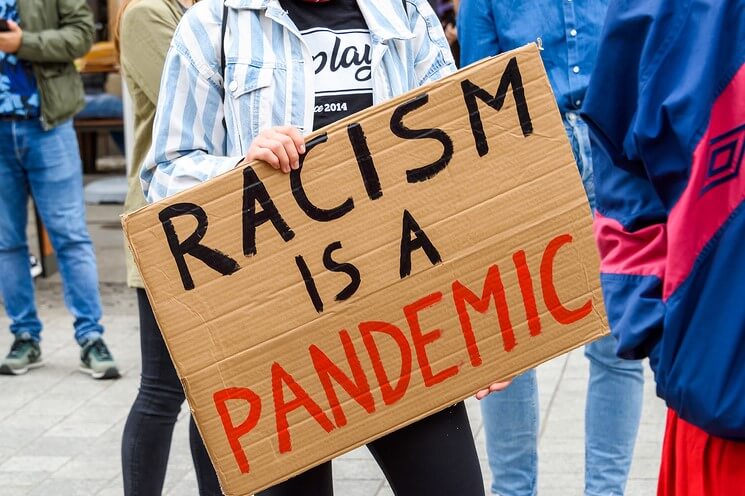
The Role of the Church in Gun Violence
In 1999, I was co-pastoring a church in Parker, Colorado when the Columbine shooting happened in the community next door. At that time, school shootings were relatively infrequent. It was wholly unbelievable that it had happened in our community. Even more unthinkable was that it would be the beginning of a decades-long battle, where these kinds of events became increasingly frequent.
The church was flooded with broken-hearted people who wanted to know why such a tragic event had taken place. We led a series of healing services in an attempt to deal with this devastating reality.
Pictures of the victims were in every newspaper and on every broadcast. I aimed to remember the name and story of each student and teacher who had been killed. I never thought I’d see the day where non-stop shootings made it impossible to remember all who have been lost. And now, here we are.
After the recent mass shooting at a Tulsa, OK medical clinic I texted my clergy colleague, James, who pastors in that community and asked what I could do to help. James replied with such a clear and powerful response that I promised to take action. I invite you to do so as well. But first, let me give you some background.
The Intensifying Problem of Gun Violence
In the last 3 months alone, there have been mass shootings at a Taiwanese church (Laguna Woods, California), a grocery store in a primarily black neighborhood (Buffalo, New York), an elementary school (Uvalde, Texas), and a medical center (Tulsa, Oklahoma). Sadly, this list is not comprehensive. These are just the stories that have made the national news.
Gun violence is at a higher rate than ever, even with stay-at-home orders being imposed for the greater part of 2020. According to the Pew Research Center, “The 2020 total [number of gun murders] represented a 34% increase from the year before, a 49% increase over five years and a 75% increase over 10 years.”
Yet, our methods of coping have not kept pace with the rise in gun violence. The pandemic badly disrupted our normal means of belonging, further worsening the situation. The government is often at a standstill on this matter. Churches struggling with dwindling attendance often feel overwhelmed with the idea of taking on potentially divisive issues. Thus we are left in a reactive mode when it comes to gun violence.
The Myth Behind Mass Shootings
With this background in mind, let me next dispel a common myth. That is, that there is only one kind of mass shooting and one kind of answer. But we can already see that schools, stores, medical clinics, and churches represent a range of public spaces. Add to that nightclubs, festivals, synagogues, mosques, homes, and places of work, and the list of where gun violence takes place goes on and on.
When it comes to fixing the problem—answers range there as well. Should we find help for the single, young, disturbed white male with poor mental health? Should we be concerned about the radical White supremacists that have infiltrated every corner of the internet and are spreading prejudice and intolerance to anyone who will listen? Should we get better gun policies? Should we promote better school safety? Your answer may depend on your political leanings, or simply on your knowledge of the situation. Yet as much as we know, we seem to have taken action on precious little.
The Church’s Role in Gun Violence
James reminded me that the church does have a positive role to play in gun violence. One that goes beyond comforting victims and actually gets to root causes. “Prayers are appreciated, but the best thing we can do is to put pressure on politicians to get real about addressing the root problems. Mental health, common sense gun policies, the pervasive culture of hate and violence, and the deflection of responsibility. As a clergy leader, I am preaching, leading, and encouraging members of my community to take action.”
I love this list because it’s not either/or. It’s not us vs. them. And, it’s not beyond our reach. After all, our baptismal vows call us to resist evil, injustice, and oppression in whatever forms they present themselves, and to be a witness for the gospel of good.
Next Steps
As part of my commitment to take action, I’ll be addressing each of these components in turn through the lens of the church. As we continue to heal ourselves, our congregations, and our communities, I’d like to offer some suggestions for next steps you can take today or in the coming week:
- Create space for conversation in your ministry setting. Gun violence impacts everybody, and everybody is concerned, no matter what their answers are for how to deal with it.
- Plan to preach a series on these topics.
- Tune into my upcoming Leadership Mojo broadcasts on Facebook Live, where I’ll discuss these topics with some special guests.
- Join me for the next three blogs in this series for a more in-depth look into the four components that need to be addressed to impact gun violence.
I want to leave you with the following thought, which was published in a recent editorial featured in Intermountain Jewish News:
“There is no single answer to mass shootings. But there are answers. There is an all hands on deck approach. There is: both/and. Yes to better gun laws (as we have urged repeatedly). And, yes to additional mental health services (as we have also urged repeatedly). And, yes to federal standards of safety for schools (and, yes to Democrats and Republicans working together on this). And, yes to a painful process of national introspection on the decline in our personal mores and on the social media obsession that leaves so many isolated. And, yes to anti-bullying efforts… We owe it to [our children] ‘to do something.’ But, in our simplistic world ‘to do something’ has come to mean, ‘to find the solution.’ Which has also come to mean: to reject an opponent’s solution. Which means: do nothing.”
Copyright © 2022 rebekahsimonpeter.com, All Rights Reserved.







